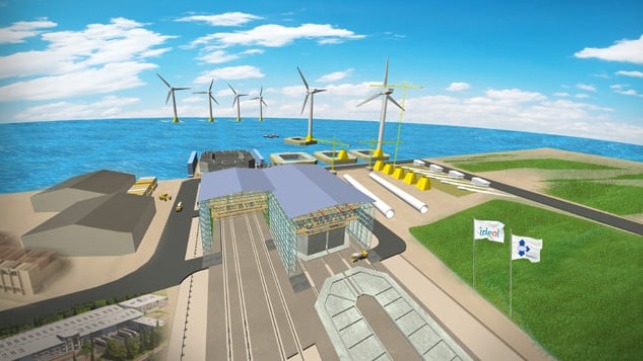Assembly-Line Concrete Bases for Floating Offshore Wind Towers

Ideol, a floating offshore wind startup based in France, has reached an agreement with Swedish manufacturer Bygging Uddeman (BYUM) for the serial production of floating concrete base structures for wind towers.
BYUM is known for its moving gantry slipforming technology, which it invented in 1944. By removing the need for building up and removing forms, it lowers the cost of casting large vertical concrete structures - particularly caissons. It has been deployed for hundreds of major infrastructure projects around the world, and it has been used to build more than 3,000 floating concrete structures to date. According to BYUM, it is about seven to nine times faster than conventional casting methods. Singapore's massive Tuas port is being built with giant, 13,000-tonne concrete caissons cast using BYUM's slipforming technology, which is contributing to a production rate of one 10-story-tall unit every 28 days.
“When we studied the numbers of floating offshore wind to be constructed within the next 10-15 years, and the option of making these floating structures in concrete, we realized a new potential application," said BYUM CEO Henrik Magnusson. "The scale and size of their concrete floater design fits perfectly with our
Gantry Slipform set-up."
Two of Ideol's pre-commercial models are currently in operation off the coasts of Japan and France with a 2 MW MHI Vestas turbine, and the firm says that the solution is designed to scale up at low cost. The floating base can be produced on a relatively unimproved pier site with simple, readily available materials, without the skilled labor required for building steel offshore platforms. The turbine tower erection and assembly is conducted quayside, without the need for a $200,000-per-day wind tower installation vessel (WTIV). Its design has relatively low freeboard, and it has a large deck space relative to bottom-fixed or spar designs, which makes maintenance boardings and operations easier.
